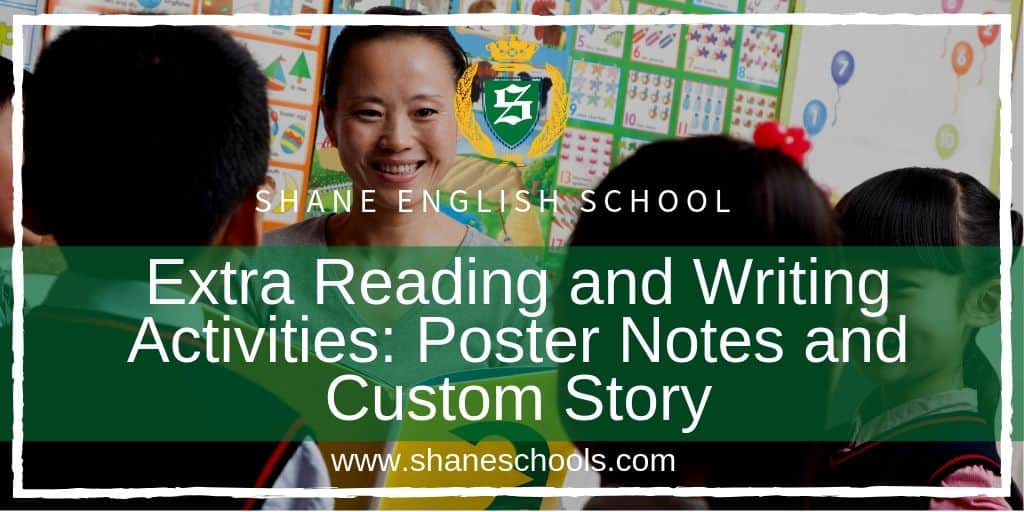It can be a challenge constantly coming up with reading and writing activities. Here are a few popular idea from a former Shane teacher.
Importance of Extra Reading and Writing Activities
To really build on the fundamentals, it’s good to have a variety of extra reading and writing activities to give students the practice they need. Repeating the same activities too often leads to boredom and a loss of motivation. Try adding these two extra activities to your class for a boost of interest.
Extra Reading Activity: Poster Notes
Prepare a large sheet of paper (e.g. the back of an old poster), tape, and small pieces of paper. Read the first chapter and summarise the important points from the chapter—one piece of information per piece of paper.
Once in class, put the poster on the whiteboard with magnets. Read the story with the students and when you come to a key point ask them about it and then tape the relevant note to the poster. Do this with all the notes you made.
Keep the poster and bring it to class the next time you want to do reading. This time, tell the students they need to tell you what you should write on the notes (but be prepared to prompt). This activity is very useful for complex stories that the students struggle to follow.
Extra Writing Activity: Custom Story
If your students have finished reading their current reader and have re-read it enough times to be fluent, use this as an opportunity for them to use their imagination.
Write part of the title on the whiteboard e.g. The Secret ___. Ask them, “The secret… what? What can we write here?” Be ready with suggestions in case you get blank looks: “The secret potato? The secret robot? The secret…” Listen to their suggestions and pick the one has the most potential.
Choose new names for the characters (students from the class, spec characters, famous Taiwanese names, etc.). Open the reader and start writing the first sentence on the whiteboard but ask students if they want to change words or how they want to finish the sentence.
The students copy what the teacher has written on the whiteboard. If their level is high enough or the students are confident enough, stop writing after the first few sentences and get them to write by themselves. If they are not good enough to do that, keep eliciting ideas and spellings from them. Keep the stories short.
Note: This activity also works well if your students are not too crazy about their current reader and are vocalising their dislike. Listen to what they say and ask them how they want to change it. If the students are having difficulty getting into reading, there’s some great advice on how to P.I.C.K. the right book.
Are you looking for other activities? You may also want to check out Pop Songs in ESL Lessons or see what’s new in the Shane English Schools Teaching Tips.
A version of this article was originally printed in Shane English School Taiwan’s Teachers’ News, Volume 13, Issue 3. Original by Salomi Enslin.
Do you have any extra reading and writing activities? Leave us a comment below.

We're hiring!
With schools around the world, Shane English School always has exciting new opportunities to offer.


